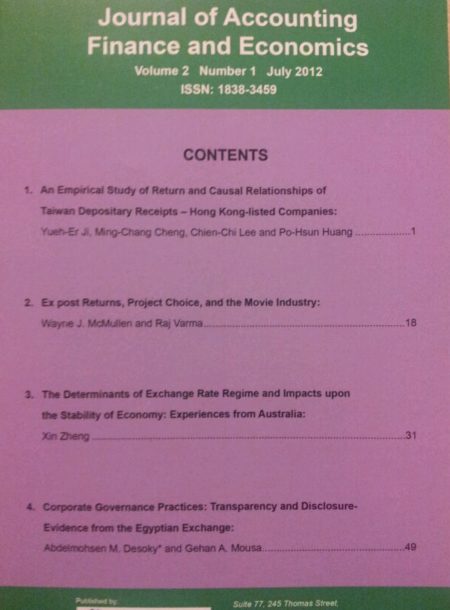Journal of Accounting, Finance and Economics
Vol. 6. No. 2., September 2016, Pages: 65 – 77
Monetary Policy Transmission Mechanism and Its Effectiveness in the Banking System of Pakistan
Rabia Shakir
The role of monetary policy is vague in the sense that the nature of macroeconomic variables is dynamic. This fact of dynamicity has made it difficult to capture the exact notion of the behavior of macroeconomic variables. This study was carried out to evaluate the effectiveness of the monetary policy transmission mechanism in the banking system of Pakistan. The study also looked into the magnitude at which tools of monetary policy transmission mechanism affects economic growth in Pakistan. With the beginning of the era of consumer banking, consumption expenditures have grown rapidly because of increased financial services availability. Such an increase in consumption expenditures increases the aggregate demand over time, thereby creating demand pull inflation which is in contrast to the monetary policy objectives. Therefore, the study sought to provide an intuitive explanation of this contrast in monetary policy measure that encourages inflation, through an indirect transmission mechanism in Pakistan. The hypothetical framework was developed by considering four variables, namely; money supply, real lending rates, inflation rate and real GDP. The techniques of co-integration and granger’s causality are applied to the past 35 years of data (1980-2015) to determine the direction and strength of relationships between variables. However, the results are quite disparate to monetary theory; the analysis of data revealed that when supply of money increases in the economy, real lending rate decreases. Consequently, households consume more as credit is available at low cost; thus, they save less and spend more.

